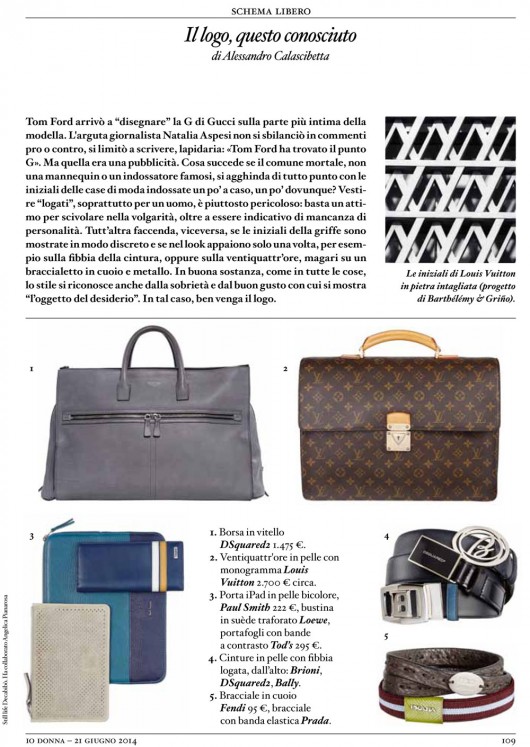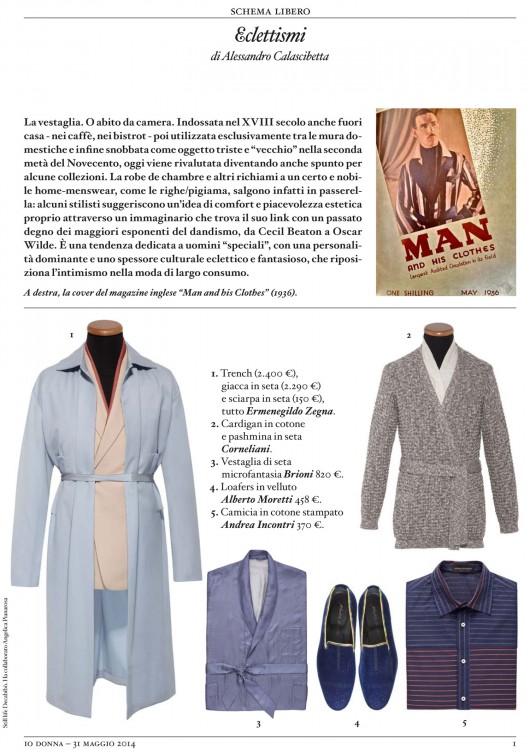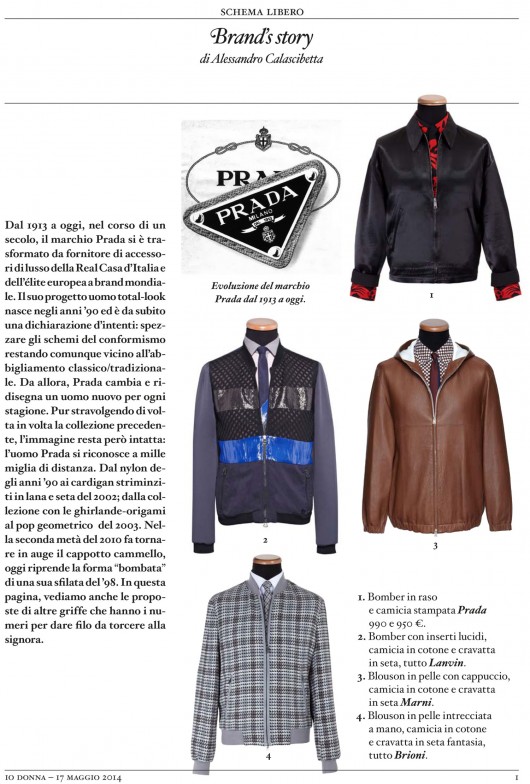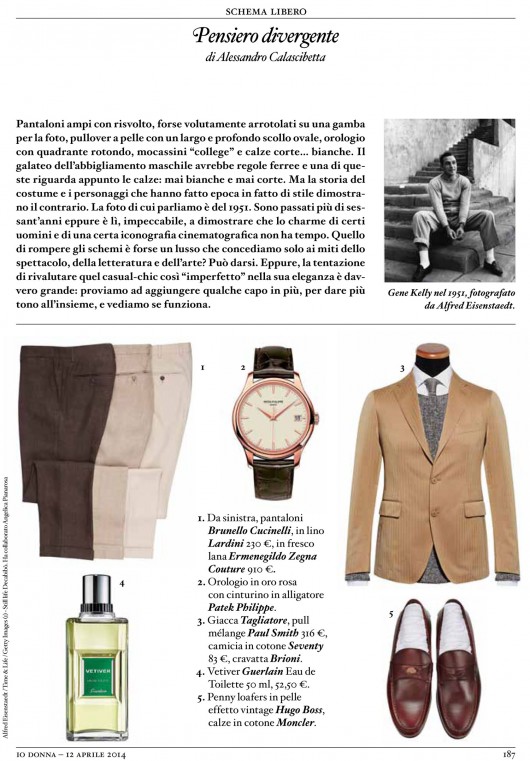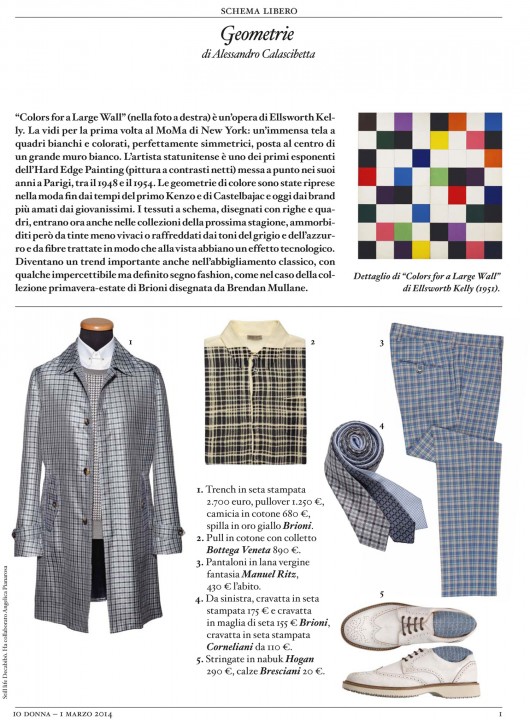SCHEMA LIBERO IL LOGO, QUESTO CONOSCIUTO
The logo, this well-known. Tom Ford even “drew” the G of Gucci on the most intimate part of the model. The sharp journalist Natalia Aspesi didn’t come forward with positive or negative comments, but she declared, lapidary: “Tom Ford has found the G-spot”. But that was an adv. What happens if the mere mortal, not a mannequin or a celebrity, completely primps with logos, randomly and everywhere? “Logoed” garments, especially for men, are fairly dangerous: it’s easy to drift into vulgarity, and to show a lack of personality. A completely different matter when the logo is shown in a moderate way and when it appears only once in the outfit, for example on the belt buckle, or on the briefcase, maybe on a leather or metal bracelet. To sum up, style is recognisable also in sobriety and good taste used to show the “object of desire”. In this case, the logo is welcome. The initials of Louis Vuitton carved in stone (project of Barthélémy & Griño).





